Some might consider Memorial Day little more than a day off — a time to break out the barbecue or hit the swimming pool. But that would be selling the holiday tragically short.
Memorial Day was created to commemorate deceased veterans, lost servicemembers and soldiers killed in action who gave their lives to bring you liberty.
You don’t have to be a friend or family member of a fallen servicemember to pay your respects on Memorial Day. All are welcome to participate.
The day is always held on the last Monday of May, which falls on the 29th in 2023.
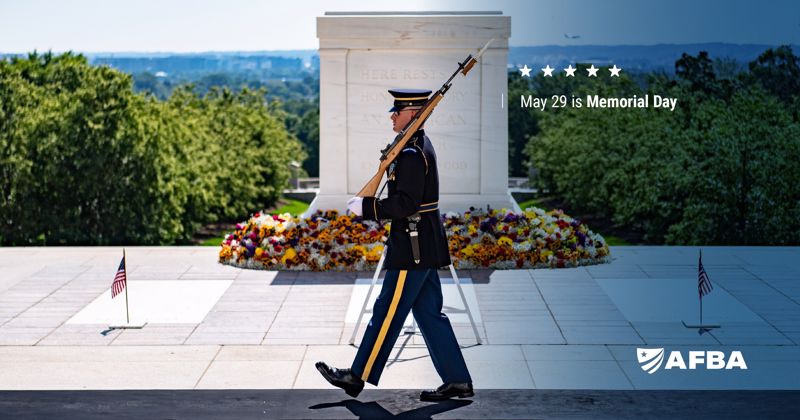 “The appearance of the U.S. Department of Defense (DoD) visual information does not imply or constitute DoD endorsement.”
“The appearance of the U.S. Department of Defense (DoD) visual information does not imply or constitute DoD endorsement.”How to observe Memorial Day
While there is no “right” way to observe Memorial Day, here are a few ideas.
Display the American Flag on your property
This is something almost anyone can do to pay respects. You could install a flagpole or simply insert smaller flags around your property. If possible, ensure the flag is at half-staff from sunrise to noon, then full-staff until sunset. Homeowners’ Associations may have certain rules they expect you to follow, so check with them to ensure your display is appropriate.
Visit a local cemetery to pay personal respects
While official ceremonies take place across a wide range of cemeteries, they can’t include every single one. If you know of a place where lost soldiers are buried, feel free to visit their resting places.
It’s common practice to leave something at the grave site. Flowers, coins and stones are possible options. It would be wise to familiarize yourself with what each type of item represents. For example, pennies indicate you have no formal relationship with the deceased, but dimes are for when you served with the servicemember. Be especially careful with the quarter: This means you were present at the time of their death.
This type of remembrance may be especially useful if you’re a loved one of the fallen servicemember and would prefer to pay respects in private. Or you may feel similarly about soldiers you might not have known in life but wish to honor in your own way.
Attend an official service
All over the nation, organizations hold services to commemorate Memorial Day. Both urban and rural areas hold ceremonies, so it’s highly likely that your local community or one close to you is having its own.
For example, the Kansas Commission on Veterans Affairs has planned observances beginning at 10:00 AM local time at all four of its state cemeteries. California has compiled a comprehensive list of its own ceremonies taking place across the state on military grounds, main public streets, beaches and other locations. Whatever state you live in, you’re sure to find an opportunity to pay your respects at an official Memorial Day service.
No ceremony may be more famous than the one held annually at Arlington National Cemetery, where the President of the United States of America pays their respects and delivers an address for the thousands of visitors in attendance. The president or their designee also lays a wreath at the Tomb of the Unknown Soldier where all unidentified servicemembers are represented.
All official Memorial Day services are open to the public and require no bookings or tickets in advance.
However you observe Memorial Day, do it solemnly
Feel free to do one, some or all of these activities during Memorial Day. If you’re feeling especially creative, come up with something on your own.
However, it’s important to remember that Memorial Day is not meant to be a carefree celebration, but a holiday for the solemn paying of respect for fallen servicemembers who can’t be there. Keep this in mind when planning your observance.
There are few jobs as selfless or necessary as the military caregiver. These individuals — who can be friends, distant relatives, family members, or anyone else who wants to help — assist disabled members of the military with activities they can no longer perform on their own. This can include showering, eating or dressing. A military caregiver might also be called a veteran caregiver if the individual receiving care is a veteran but not an active servicemember.
Despite the name, not all military caregivers identify as caregivers. A military caregiver isn’t necessarily a job title (though for some, it can be), but rather a catch-all term for someone who helps a servicemember or veteran with daily activities.
While they’re necessary to the service member’s life, many military caregivers don’t get the resources they need to manage. Being a military caregiver is often extremely stressful, and many give up basic necessities in their lives to serve their member(s) of the military. That’s why, in addition to talking about how valuable military caregivers are, we’ll also be discussing the resources available to them — and how you can help.
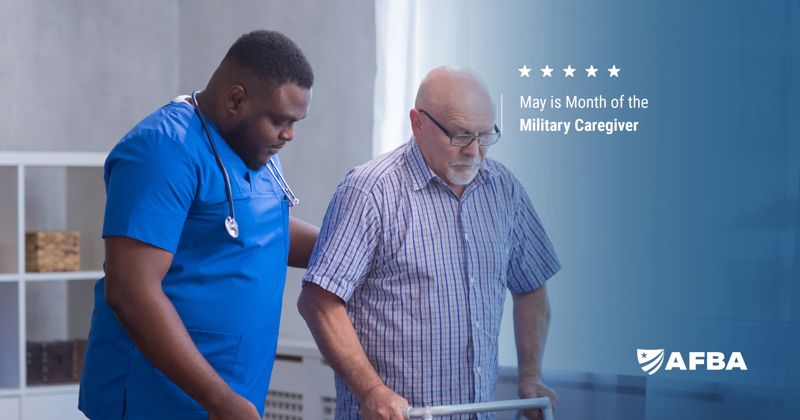 “The appearance of the U.S. Department of Defense (DoD) visual information does not imply or constitute DoD endorsement.”
“The appearance of the U.S. Department of Defense (DoD) visual information does not imply or constitute DoD endorsement.”How else do military caregivers help?
A military caregiver may not assist with physical activities at all, but instead (or even in addition to this) serve a servicemember by:
- Offering emotional support.
- Taking care of legal or financial responsibilities.
- Managing their schedule and transportation to and from appointments.
Active duty members of the armed forces and veterans alike often don’t get the help they need to function in their daily lives. A military caregiver is someone who makes that possible.
The challenges military caregivers face (and the help they can get)
Serving indirectly as a military caregiver isn’t easy. It can be incredibly stressful and eventually lead to burnout, which in turn can lead to serious psychiatric symptoms such as anxiety and depression.
Luckily, there are some programs available that aim to assist those who sacrifice more than just their own time and energy to care for active service members and veterans (many give up their education, health and finances as well). One is the Department of Defense, which has been reaching out to military caregivers since 2013 to provide support. They offer resources such as networking opportunities with other caregivers to help each other cope emotionally, physically and financially. For many military caregivers, opportunities like these are invaluable for their own well-being.
Other nonprofit programs such as the Wounded Warrior Project exist to help wounded members of the military return to being active participants in their community, among many other services the organization offers. Military caregivers can also take advantage of the extra help.
What can you do to help?
If you want to become involved in helping military caregivers care for both their service member(s) and themselves, reach out to one and offer whatever assistance you can. They will surely appreciate it.
Alternatively, you can donate to a cause such as the Wounded Warrior Project that directly benefits military caregivers. You can also call up your nearest army station or veterans affairs office and ask if they know of any local opportunities to get involved.
Become a positive force for military caregivers so they can continue to serve
Military caregivers give their bodies and souls to caring for an active duty service member or veteran. Just as the military community constantly needs help, so are the people who are crucial in improving their quality of life.
This May, recognize and honor those who indirectly serve in this way.
High blood pressure, or hypertension, affects about 65 million Americans, according to the Food and Drug Administration (FDA). Left unchecked, it can increase your risk of many different conditions, including heart disease, stroke, vision loss and kidney damage. That’s why it’s so important to be aware of your blood pressure and measure it daily.
Here, we’ll outline the why and how for effective blood pressure monitoring.
The importance of tracking your blood pressure every day
Not only should you measure your blood pressure at least twice each day, but you should also do it at the same time. Your blood pressure can change as the day progresses. The better you stick to these times, the more likely you are to get an accurate and consistent reading.
This is a good habit to get into even if you’re healthy. But for those who suffer from high blood pressure or are at risk of it, measuring it can be the difference between life and death.
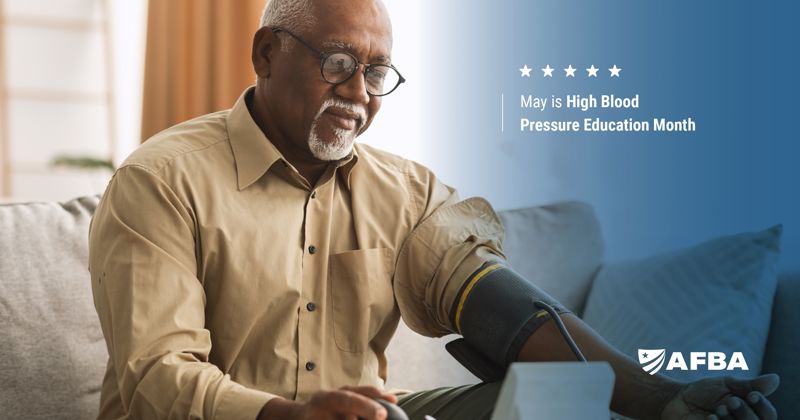 “The appearance of the U.S. Department of Defense (DoD) visual information does not imply or constitute DoD endorsement.”
“The appearance of the U.S. Department of Defense (DoD) visual information does not imply or constitute DoD endorsement.”Tips for tracking blood pressure
Not every time is appropriate to take your blood pressure. For example, you shouldn’t take your blood pressure as soon as you wake up in the morning. Instead, wait at least 30 minutes. Feel free to perform your morning routine before you take a reading.
However, it’s not a good idea to take your blood pressure immediately after breakfast, as both food and drink (especially if it contains caffeine) can affect your levels and prevent you from getting an accurate reading.
Good times to choose from might include right before you leave for work, after you come home or before bed. Ideally, for the most accurate results, you should have an empty bladder before taking your blood pressure.
While you can visit a doctor’s office to get readings, you don’t necessarily get the most accurate one there (especially if you tend to get nervous at such places). Devices that can check blood pressure, including pressure cuffs, are readily available over the counter.
There are a few key things to keep in mind when choosing:
- What can you afford? Blood pressure monitors vary significantly in price. Sometimes, insurance will cover the cost. Check before committing to a purchase.
- Does your cuff fit comfortably? It’s best to ask your doctor about this. They can take measurements and tell you exactly what size suits you.
- Can you read the display? Make sure the numbers on the screen are large enough for you to comfortably read.
- Is the device reliable? Ensure you choose a quality brand and model.
The benefits of tracking blood pressure
The primary benefit of tracking your blood pressure, even if you don’t knowingly suffer from high blood pressure, is to give yourself a chance to catch potential issues before they become big problems. If you find that your blood pressure readings are abnormally high for several days in a row, it could be a sign of illness.
If you suffer from high blood pressure or are at risk, then you also want to know if your treatment is working. There are many prescription treatments for high blood pressure and the only way to tell if they’re working is to measure the results.
Checking your blood pressure at home is a quick and easy way to stay safe
Use High Blood Pressure Education Month to learn all you can about how to better take care of yourself. To better stay in control of your health, you should know what your usual blood pressure is and check for changes. By doing this, you can ensure you’re as healthy as can be.
It is your heart we’re talking about, after all. Is there anything more vital to your well-being?
May stands out for a lot of reasons — summer is just around the corner, after all — but it also distinguishes itself as being National Military Appreciation Month.
National Military Appreciation Month consists of six holidays perfect for honoring service members and their families. While every day is a good day to honor those in the armed forces, these days are distinguished as particularly special.
Let’s talk a little about each in the chronological order they fall in 2023.
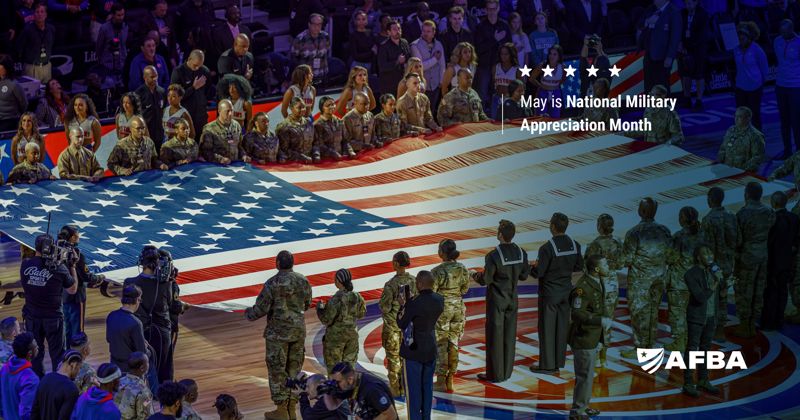 “The appearance of the U.S. Department of Defense (DoD) visual information does not imply or constitute DoD endorsement.”
“The appearance of the U.S. Department of Defense (DoD) visual information does not imply or constitute DoD endorsement.”The individual holidays in National Military Appreciation Month
Each of the six military holidays in May serves a unique purpose, dedicated to a specific cause.
Loyalty Day (May 1)
This holiday is unique in both its relative obscurity and its purpose compared to the other military-themed holidays in May. Congress has described Loyalty Day as “a special day for the reaffirmation of loyalty to the United States and for the recognition of the heritage of American freedom.” If there’s an ideal day to recite the Pledge of Allegiance, this is it.
VE Day (May 8)
Short for “Victory in Europe Day,” this day marks the anniversary of the end of World War II on the European front in 1945. This holiday is recognized and celebrated across the world, and the U.S. is no exception. We had many allies in Europe who helped end the Second World War, and this day is for them.
Military Spouse Appreciation Day (May 12)
This day takes place every year on the Friday before Mother’s Day — May 12 in 2023. As you can probably tell by the name, this particular holiday is to commemorate and honor the spouses of those in the armed forces. These husbands and wives serve in their own capacities, encouraging their partners in any way they can. For many service members, their spouse’s support is invaluable.
Mother’s Day (May 14)
This holiday is held annually on the second Sunday of May. In 2023, that’s the 14th. Whether it’s a mother with a child in the military, a mother who serves or one who helps care for children with a serving father, they all deserve a special place on Mother’s Day. Many mothers are veterans themselves who instilled in their children values taught by the military: honor, discipline and patriotism, to name just a few.
Armed Forces Day (May 20)
Every third Saturday in May is when the U.S. celebrates Armed Forces Day, which in 2023 lies on May 20th. First celebrated in 1949, this day specifically honors those who currently serve in the armed forces. Originally, there were individual holidays for each military branch: Army Day, Navy Day and so on. This is the perfect time to help out the families of those who are away from home, selflessly serving their country.
Memorial Day (May 29)
The month’s observances end on the last Monday in May, when Memorial Day is held — May 29th, 2023. Veterans Day is for those who formerly served, Armed Forces Day is for the currently serving and Memorial Day is for those who have given their lives to protect the American way of life. Many visit the graves of fallen service members to pay their respects to these honored souls.
There is no better time to honor those in the armed forces
The year consists of many military-themed holidays, but no month is so bursting with meaning than National Military Appreciation Month. This year, demonstrate your appreciation for everything the service members in our armed forces do by recognizing and commemorating each holiday.
If you’re a servicemember, veteran, dependent or any other eligible type of passenger, you may qualify for free accommodations on Space-A flights if a vacancy is available.
What is a Space-A flight?
Space-A stands for space-available flight and is also referred to as military hopping. If a Department of Defense (DoD) aircraft has vacancies when traveling between air bases, eligible persons may fill these seats at no charge, according to the John S. McCain National Defense Authorization Act. The purpose of Space-A is to give certain types of people the freedom to travel on flights that have vacancies.
Space-A flights can be on commercial airplanes, but they might also be on fuel tankers or cargo aircraft.
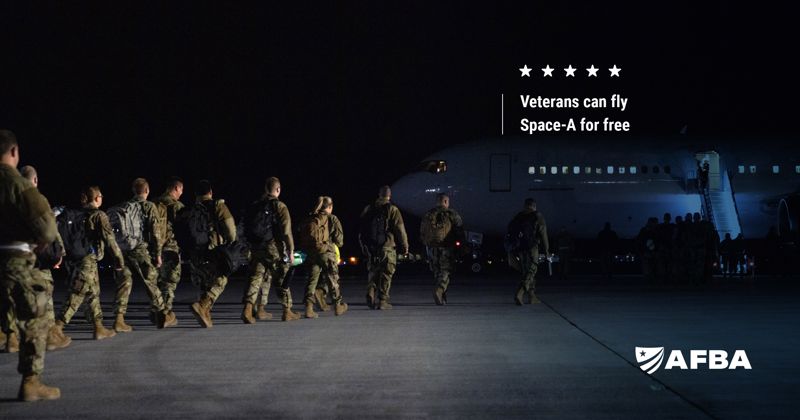 “The appearance of the U.S. Department of Defense (DoD) visual information does not imply or constitute DoD endorsement.”
“The appearance of the U.S. Department of Defense (DoD) visual information does not imply or constitute DoD endorsement.”The different categories of travelers
Depending on who you are and the reason for your travel, you’re placed in one of six categories. When Space-A considers who gets priority when someone requests to fill a vacancy, the lower categories get picked first. Here are the different categories and what they might include:
Category 1: Emergency leave travel
The emphasis here is on the word “emergency.” People who might qualify for this category include DoD civilian employees who are stationed overseas or full-time American Red Cross employees serving in a military capacity.
Category 2: Accompanied environmental and morale leave (EML)
This might include DoD Dependent School (DoDDS) teachers on vacation or sponsors traveling for EML purposes.
Category 3: Ordinary leave, house hunting TDY
Those on ordinary leave or military members who are house hunting (following PCS orders) generally qualify for this rank.
Category 4: Unaccompanied dependents on EML
Family members on EML are in this tier. This also encompasses DoDDS teachers and their family members.
Category 5: Permissive TDY, students, dependents, post-deployment/mobilization respite absence
If their sponsor is stationed overseas or in Alaska or Hawaii, students fall into this group.
Category 6: Retirees, dependents, reservists and disabled veterans
This category would apply to these types of flyers on vacation, for example.
How to sign up for Space-A flights
Signing up for a Space-A flight is very different from booking a seat on a commercial aircraft. You won’t be using traditional airports or booking accommodation at all; instead, you’ll communicate with an Air Mobility Command (AMC) Passenger Terminal to reserve a spot.
These are instructions to keep in mind, according to AMC. More information can be found on their website.
- Ensure your eligibility. There are six categories of travel that determine your eligibility for Space-A, with lower categories getting higher priority. This includes emergency leave, unfunded travel, and accompanied or unaccompanied environmental and morale leave (EML). Which category you fall into depends on the reason behind your travel and your duty status.
- Check which locations are available. Review your closest AMC Passenger Terminal through their social media page or website.
- Make sure your documents are in order. Look at which travel documents you need to prepare before your flight. This includes your passport (with visas, if applicable).
- Register at an AMC Passenger Terminal.
- Look at flight schedules. There is a 72-hour flight schedule on the American Forces Public Information Management System (AFPIMS) web page.
- Check-in at the terminal counter. Familiarize yourself with any newly updated flight information and declare that you are present. If everything is in order, the terminal will give you a Space-A call when they’re ready for you to board.
Roam the skies for free with Space-A flights
While not everyone is eligible to ride on a Space-A flight under all circumstances, as long as you meet the basic requirements, you can take advantage of this perk. For more information, contact your nearest AMC passenger terminal.
There is still a strong stigma attached to mental health. Mental Health Awareness Month is the perfect time to help shatter that perception and inspire those who need it to seek out help.
One group that experiences increased rates of psychiatric illness are first responders and armed forces servicemembers, especially those who were in combat. Too many suffer in silence, though they don’t have to, as there are many programs available specifically for veterans and first responders alike. Operation Resiliency is one such example that aims to help servicemembers deal with mental health issues by encouraging interaction between soldiers who share bonds forged through combat in the military.
 “The appearance of the U.S. Department of Defense (DoD) visual information does not imply or constitute DoD endorsement.”
“The appearance of the U.S. Department of Defense (DoD) visual information does not imply or constitute DoD endorsement.”Operation Resiliency
The underlying concept behind Operation Resiliency is that soldiers who form bonds in combat can help each other cope with trauma. Operation Resiliency hopes to assist both active duty and veteran service members better manage their mental health by bringing them together with no-cost retreats close to their homes. They also follow up with these individuals in an effort to keep connections strong among these soldiers.
Since the end of 2022, Operation Resiliency has served 468 service members. The project aims to hold six more retreats throughout 2023.
The origin of Operation Resiliency
The concept for Operation Resiliency came from Sarah Verardo, whose husband, Mike, was badly wounded in Afghanistan.
Verardo served in Bravo Company, 2nd Battalion, 508th Parachute Infantry Regiment of the 82nd Airborne Division. This unit fought in the especially deadly Arghandab region in Afghanistan, where nearly half of the soldiers in the team were awarded Purple Hearts. When several of these infantrymen committed suicide, Sarah called retired Army Command Sgt. Maj. Donald McAlister, first sergeant for Bravo Company in the Arghandab. They conceived of Operation Resiliency as part of their joint belief that they should do their part to prevent further tragedy.
McAlister led the first retreat for veterans in Bravo Company in North Carolina, where nearly 100 veterans of the company showed up. He believed he should lead them with full transparency of his own difficult reality to encourage others to do the same. “…Leading by example was being open and honest, and letting them know that mentally, physically, I’ll never be the man I was before…But at the end of the day, that’s OK…I told them, ‘You know, it’s OK for us all to not be OK, as long as we, as long as we acknowledge it. We can see the enemy, see what’s coming at us,” said McAllister, according to a report by the U.S. Department of Defense.
Psychiatric illnesses are not a sign of weakness
One in five adults suffers from mental illness, as claimed by the National Institute of Mental Health. This statistic is the same for first responders and those who serve in the armed forces. No one — no matter how tough the person may be — is immune, and no one can “power through” psychiatric disorder through sheer force of will any more than they can a broken leg.
If you’re experiencing a crisis or if you feel you may hurt yourself or others, you can dial 988, which connects you to the Suicide and Crisis Lifeline. Calling 911 is also an option.
Bravo Company is an example of the strongest among us recognizing their experiences and reaching out to their combat brothers for relief. Programs such as Operation Resiliency give these soldiers hope — which is what they require most in their time of need.
May is a special time to celebrate exceptional individuals of Asian American and Pacific Islander heritage. We’ll discuss three individuals who offer inspiring stories of their own.
Ellison Onizuka
Ellison Onizuka was the first Asian American to break through the atmosphere and fly into the great beyond of space on the Space Shuttle Discovery in 1985. He was also a distinguished servicemember of the U.S. Air Force.
While in the Air Force, Onizuka served as a test pilot and flight test engineer at the Sacramento Air Logistics Center, McClellan Air Force Base. At the U.S. Air Force Test Pilot School, he spent over 1,700 registered hours flying, ultimately earning the rank of Colonel.
As an astronaut, he was part of NASA’s historic Astronaut Class of 1978, also known as the “Thirty-Five New Guys.” This was the first new class of astronaut candidates since 1969.
Unfortunately Onizuka was one of the victims of the tragic Space Shuttle Challenger explosion in 1986. However, his memory is alive and well, and he’ll forever be an honored astronaut and Air Force veteran.
Norman Mineta
A member of the U.S. Army before becoming a politician, Norman Mineta would ultimately end up as the longest-serving member of the U.S. Department of Transportation and be in charge of reforming trust in flying after 9/11. He was one of the driving forces behind the formation of the Transportation Security Administration.
Mineta started his life as the son of Japanese immigrant parents. He and his family were forced into internment camps during World War II. When he was released, he attended and graduated from the University of California of Berkeley. Upon joining the Army in 1953, he served as an intelligence officer in Korea and Japan.
He soon decided to enter the political sphere in his hometown of San Jose, California. Mineta served on the City Council from 1967 to 1971 before becoming mayor in 1971 until 1974. This made him the first Asian American mayor of a major U.S. city. He would go on to eventually become a Congressman, overseeing the Department of Transportation during the 9/11 attacks.
Mineta was deeply affected by his experiences during World War II and became a prominent advocate for Asian American civil rights. One of his most notable accomplishments was his successful effort to pass the Civil Liberties Act of 1988. This act represented an official apology and offered reparations to Asian Americans who were victims of Japanese internment camps.
Tammy Duckworth
Tammy Duckworth is currently a U.S. Senator from Illinois, though she’s also well known as the former Assistant Secretary of the U.S. Department of Veterans Affairs.
Before that, Duckworth was an Iraq War veteran who flew combat missions in a Blackhawk helicopter. While flying in combat in 2004, her aircraft was struck by an RPG. She lost both her legs and some function of her right arm. However, she went on to hold a successful career in politics where she focused on veterans’ rights.
As Director of the Illinois Department of Veterans’ Affairs, Duckworth succeeded in establishing programs for veterans, including:
- Advancing availability of housing and health care.
- Instituted a crisis hotline.
- Developing a tax credit incentive for employers to hire former servicemembers.
Duckworth continued to help veterans in exemplary ways, going on to serve under President Obama, where she made a great many advancements aimed at easing the challenges this vulnerable population commonly faces.
 “The appearance of the U.S. Department of Defense (DoD) visual information does not imply or constitute DoD endorsement.”
“The appearance of the U.S. Department of Defense (DoD) visual information does not imply or constitute DoD endorsement.”Celebrate Asian American and Pacific Islander heritage this May
This May, you can use these stories as inspiration to excel in your own life. All three of these individuals have inspiring stories noteworthy for their instances of bravery and exceptional accomplishments.
April is Military Child Month, and during this period there’s a particularly special day for children of military families. Military Brats Day, held on April 30th every year, offers a unique opportunity to recognize these “military brats” and bring attention to their uncommon experiences and challenges.
What is Military Brats Day, and where did it come from? Let’s dive in to explore this holiday.
The history of Military Brats Day
Military Brats Day has its origins in 2016 when the nonprofit organization Military Brats, Inc. made April 30 an unofficial holiday to celebrate kids from families in the armed forces. These “military brats” help support their parental servicemembers as proud sons and daughters — so in a very real way, they indirectly serve.
To some, the term “brat” might sound negative, but there’s a good reason why “military brats” are referred to that way. “BRAT” is an acronym originally coined in 1921 that stands for British Regiment Attached Traveler — family members who travel with service personnel. This became a popular way to refer to the kids of military families.
Military Brats, Inc. is currently lobbying Congress in an effort to make Military Brats Day an officially-recognized national holiday.
Military Brats, Inc.
Military Brats, Inc. has an explicit mission “to preserve the culture and heritage of those who grew up military.” Their goal is to bring assistance to military families through donation-led programs, wherever they may be needed.
Operation Footlocker is a program the organization is closely involved in along with the Museum of the American Military Family. Not to be confused with the educational program of the same name at the National World War II Museum in New Orleans, LA, this project aims to bring together military brats across the country at special events. The official Operation Footlocker home page defines it as “an occasion for brats to come together and swap stories, celebrate, and in various ways pay tribute to our roots.”
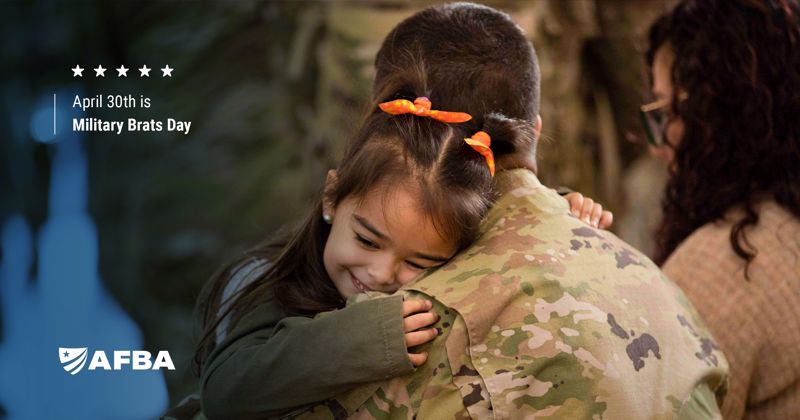 “The appearance of the U.S. Department of Defense (DoD) visual information does not imply or constitute DoD endorsement.”
“The appearance of the U.S. Department of Defense (DoD) visual information does not imply or constitute DoD endorsement.”What makes military brats unique?
Military brats typically share certain characteristics that make them (and their upbringing) unique. Families in the armed forces often need to relocate frequently, and this includes the children of the parental servicemember(s). These young people follow their parents wherever they go, and this presents them with some uncommon challenges that shape their character for life. A military brat changes schools an average of six times in life, according to National Today.
This means military brats often have innate difficulties making lasting friendships with peers and don’t always have a place to call their hometown — but it also makes them closer to their families. These children have strong ties to the constants in their lives, not the least of which are their parents and siblings.
Parents who serve in the armed forces often have special qualities that they either inherently possess or learn in the military, such as discipline, honor and responsibility. These values are commonly taught to their offspring, giving another special value to military brats.
It’s not uncommon for these children to live at military bases with their parental servicemember, and this means they have access to the same perks. For example, they can spend time in the libraries at these locations or other shared recreational facilities. They can participate in any morale, welfare and recreational (MWR) activities as well.
Find a way to celebrate and honor military brats on this Military Brats Day
There’s no better time to honor the children of military families than Military Brats Day. Whether you’re a parental servicemember or a military brat yourself — or simply want to demonstrate your appreciation for military brats — use this April 30th to show it.
This April is the perfect time to celebrate the achievements and contributions of Arab Americans, who bring a fascinating and diverse culture to American life. It’s also an excellent time to celebrate Arab Americans who have put their lives on the line in the U.S. armed forces to protect their fellow Americans.
The history of National Arab American Heritage Month
The first National Arab American Heritage Month took place in April 2017 as part of an initiative by the Arab American Foundation and Arab America. It initially received some support by a few states, but in 2022 the Biden administration formally recognized the month.
Virginia, Oregon and Illinois were the first states to pass legislation designating April as National Arab American Heritage Month. There is similar pending legislation in Rhode Island, Ohio, New York, Michigan, Maryland and Indiana.
 “The appearance of the U.S. Department of Defense (DoD) visual information does not imply or constitute DoD endorsement.”
“The appearance of the U.S. Department of Defense (DoD) visual information does not imply or constitute DoD endorsement.”The three surges of Arab immigration
The first known Arab Americans were Estebanico Azemmouri and Antonio Bishallany, who came to America in 1527. Azemmouri was from Morocco and Bishallany from Lebanon. However, the first boom of Arab immigration occurred in the late 1800s when Arab Christians sought refuge from persecution and violence in the former Ottoman Empire.
The second included Middle Eastern immigrants fleeing the Arab-Israeli War. After the Immigration and Nationality Act of 1965 ended the systematic process of favoring northern and western European immigrants, a third surge occurred.
U.S. Navy Petty Officer Michael A. Monsoor is the first Arab American to earn the Medal of Honor
The U.S. armed forces have a history of notable Arab Americans serving their country, but the first to obtain a Medal of Honor was U.S. Navy Petty Officer Michael A. Monsoor, who chose to give his life so his allies could be saved.
Monsoor earned this honor during Operation Iraqi Freedom in 2006. During a sub operation designated Kentucky Jumper, Monsoor served as an automatic weapons gunner as part of a sniper overwatch element atop a building in Ar Ramadi, Iraq. Their mission was to protect the western flank of the main force.
Monsoor and his team spotted four enemy scouts and engaged them. One of the enemy fighters was killed and another wounded. A separate SEAL and Iraqi Army team took down one more enemy combatant. However, this alerted the local populace to their location.
Monsoor’s position was attacked in the early afternoon the next day. Automatic fire from enemy vehicles and a rocket-propelled grenade sieged them, but they remained in the area to protect the flank, knowing fully well that the attacks would not stop. Monsoor, with an automatic heavy machine gun, was repositioned to a sniper hide-sight between two SEAL snipers. While watching for enemy activity, he felt something bounce off his chest and land on the deck nearby. Knowing it was a grenade, he shot to his feet, warned the two snipers next to him of the threat, and then threw himself onto the explosive to protect his teammates from harm.
Monsoor was killed in action, but he succeeded in saving his allies. He was positioned in such a way that he could have escaped the blast and saved himself if he chose to. Instead, he leapt on the grenade without hesitation. This action earned him the Medal of Honor.
This April, take part in National Arab American Heritage Month
National Arab American Heritage Month is a time to celebrate Arab culture and honor Arab American soldiers like Monsoor. The Arab culture is diverse and valuable to the U.S., and many Arab Americans serve in the U.S. armed forces. Take this opportunity to recognize what Arab culture brings to America and the sacrifices heroes like Monsoor have made to protect the American way of life.
There are few greater demonstrations of altruism than volunteering for a good cause. Whether it’s for firefighting teams, first responders or something else, volunteers give their time and energy to promote a cause they believe in, without expecting monetary compensation.
National Volunteer Month, which takes place every April worldwide, is a time to not only demonstrate your appreciation for those who selflessly serve but also to volunteer for a just cause.
Here, we’ll talk about the history of National Volunteer Month and explain how you can volunteer some of your own time as a firefighter.
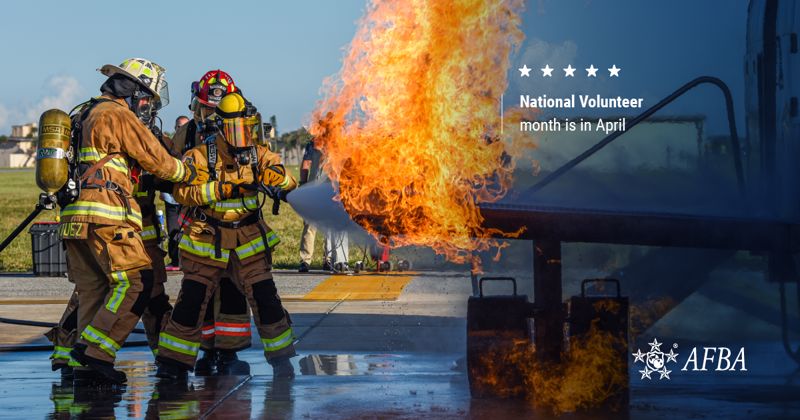 “The appearance of the U.S. Department of Defense (DoD) visual information does not imply or constitute DoD endorsement.”
“The appearance of the U.S. Department of Defense (DoD) visual information does not imply or constitute DoD endorsement.”The history of National Volunteer Month
The origins of National Volunteer Month harken back to 1943 when Canada held its first National Volunteer Week. The event intended to bring attention to and honor women who volunteered during World War II. These individuals would tend to the wounded soldiers and help collect supplies for the war effort.
The week didn’t garner much attention until the United States tried to revive the holiday in 1974. This period was soon expanded into National Volunteer Month. By 1990, the month was recognized across the world.
What volunteer firefighters do
If you volunteer as a firefighter, you may find yourself doing a wide range of activities to help out. Many volunteer firefighters, in addition to helping put out fires, might:
- Check on those who may need help at their homes.
- Deal with hazardous materials.
- Provide medical assistance to the injured.
- Help with search and rescue missions.
- Educate others on fire safety.
- Maintain firefighting equipment.
How you can become a volunteer firefighter
The process for volunteering is relatively straightforward, so make sure you follow these steps.
Ensure you’re prepared
Being a volunteer firefighter takes more than just will — these individuals must be physically fit enough to carry heavy objects and/or people, able to respond to emergency calls at any hour of the day or night and stay calm in intense situations.
Volunteer firefighters often undergo training before they’re allowed to serve. Make sure you’re prepared for rigorous physical and mental instruction.
At the very least, you need to:
- Be over 18 years of age.
- Pass a background check.
- Have a high school education or equivalent.
- Own a driver’s license.
Contact your local fire department
Call your local fire department (using the non-emergency number) and be prepared to ask questions. For example, ask if there are any openings for volunteers, what the requirements are and how many hours you’re expected to put in. It would be wise to inquire about any residency restrictions and what the screening process entails.
Go through the application process
This one’s simple: Fill out and submit an application. You can ask the fire department’s volunteer coordinator or visit their website for information.
Pass a screening
This typically includes a background check, drug test, fitness exam and answering questions like you would in a job interview.
Undergo training
You’ll need to learn the necessary skills before you can begin. This commonly includes coursework. You can also attend conferences and educate yourself with reading materials.
If you manage to pass all these steps, congratulations! You’re now prepared to volunteer for a community-oriented cause you can be proud of.
This National Volunteer Month, offer your skills to a fire department or cause of your choice
Naturally, you don’t have to wait until National Volunteer Month to offer your time and energy to a good cause, but there’s no better time than April. You may find giving back to your community to be a wonderfully rewarding experience.
